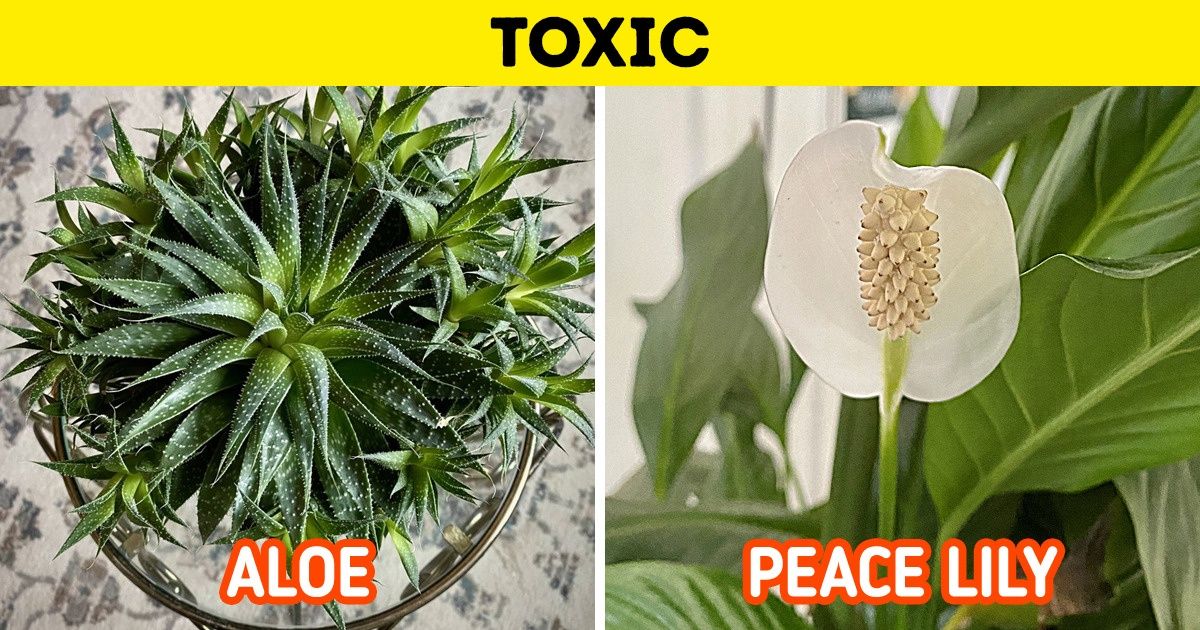I Closed My Doors to My Entitled In-Laws on the Weekend and I Don’t Regret It


When it comes to making our house a safe place for our family and pets, we tend to focus on the obvious to-dos: cushioning sharp edges, covering the outlets, installing gates on the stairs. But we don’t usually take into account a silent threat. Plants make homes more lively places but they can pose a risk to our children, pets, and even to ourselves.
Here at Bright Side, we want you to be careful about these plants next time you’re looking to add a splash of greenery to your home.
Main issue: attracts pests
These springtime blooms are such delicate masterpieces, that it’s difficult not to get caught up in the peony hype. However, if you were planning to get a bouquet of fresh peonies to dress up your dining room table, you may have to go for the plastic ones. These vibrant pink flowers not only attract our attention but also unwanted insects, such as ants.
Main issue: attracts scorpions
Being climbers, ivies can grow long and lush and bring a bit of the outdoors inside. But there are some pests you’d rather keep outside. Scorpions, like most creepy, crawly creatures, like hiding in dark damp places. If you have an ivy climbing up to the side of your house, especially in close proximity to windows, make sure you always leave them closed and trim the plant so that it doesn’t overhang.
Main issue: toxic to pets and humans
The Asparagus Fern has feathery, light foliage which makes it a quite attractive plant to grow indoors. But you should think twice before doing so, especially if you have pets or kids wandering around the house. It can be poisonous when ingested because it contains a toxic agent: sapogenin, which is a steroid found in a variety of plants.
The ingestion of its berries can lead to vomiting, diarrhea, and abdominal pain. Moreover, repeated exposure to this plant can lead to allergic dermatitis (skin inflammation). Better make sure that you wear gardening gloves when touching this plant.
Main issue: philodendron poisoning is dangerous to humans and pets.
Philodendrons can be found in many homes since they are easy to take care of and they offer a kind of laid-back vibe to our homes. Although the risk they represent when ingested is not fatal, they may cause irritating symptoms like nausea, burning, and swelling of the mouth, tongue, or throat, vomiting, and diarrhea.
Main issue: dangerous to cats and dogs
Although we have heard of the many medicinal benefits of aloe vera for humans, it can be poisonous for our beloved pets. This common houseplant contains anthraquinone glycosides, which are purgatives. This means that, when ingested, it can cause symptoms such as vomiting, diarrhea, lethargy, depression, anorexia, and tremors.
Main issue: its toxicity causes unpleasant side effects to children and pets.
The zamioculcas zamiifolia, better known as the ZZ plant, is quite a common houseplant for several reasons. The most important one is that it filters toxins from the air, which provides a better air quality in the home. It’s also ideal for those who are new to growing plants since it can endure being overwatered as well as undergoing periods of drought. Surprising, right?
The bad news is that it also contains toxins of its own: insoluble calcium oxalates. These crystals can irritate the soft tissue in the body. If ingested, it can cause soreness of the mouth and gastrointestinal tract.
Main issue: triggers allergic reactions
The evergreen leaves of this plant can provide an environment with a feeling of being in the English countryside. However, much like the Poison Ivy, this variety may also cause unwanted effects. It’s highly allergenic for some people and can trigger allergic skin reactions that lead to itchiness, rashes, or even dreaded blisters.
Pets are also not safe around this plant since, if they accidentally ingest it, they can show symptoms of intoxication—breathing problems, paralysis, etc. In the most severe cases, it can lead to a coma.
Main issue: it can be toxic to animals and humans.
This joyous plant is a symbol of love and good cheer. But you may disagree if you ingest its berries by accident. Mistletoe poisoning can lead to gastroenteritis, which is an intestinal infection that comes with diarrhea, cramps, nausea, vomiting, and fever. Next holidays, make sure you hang it in a place that is out of reach.
Main issue: attracts pests
Cultivating vegetables in your house may seem a bit far-fetched but not for the resourceful ones. Many vegetables can be easily grown indoors if you’ve got green fingers. Nevertheless, you should be careful about the pests, such as aphids, cutworms, flea beetles, etc, they may bring into your home.
The vegetables that are most likely to attract these pests are carrots, turnips, and potatoes.
Main issue: they can pose a risk mainly to children, cats, and dogs.
This seems to be the ideal plant to grow indoors because it doesn’t need much sunlight and can give a fresh vibe to any room with its lush, green leaves. Accidental ingestion of this plant can be potentially dangerous since it contains calcium oxalate crystals. This can cause pain and edema in the mouth and surrounding skin. In severe cases, it can lead to nausea and vomiting.
Do you have any of these plants at home? If you know of any other potentially dangerous plants, please share them in the comments.











